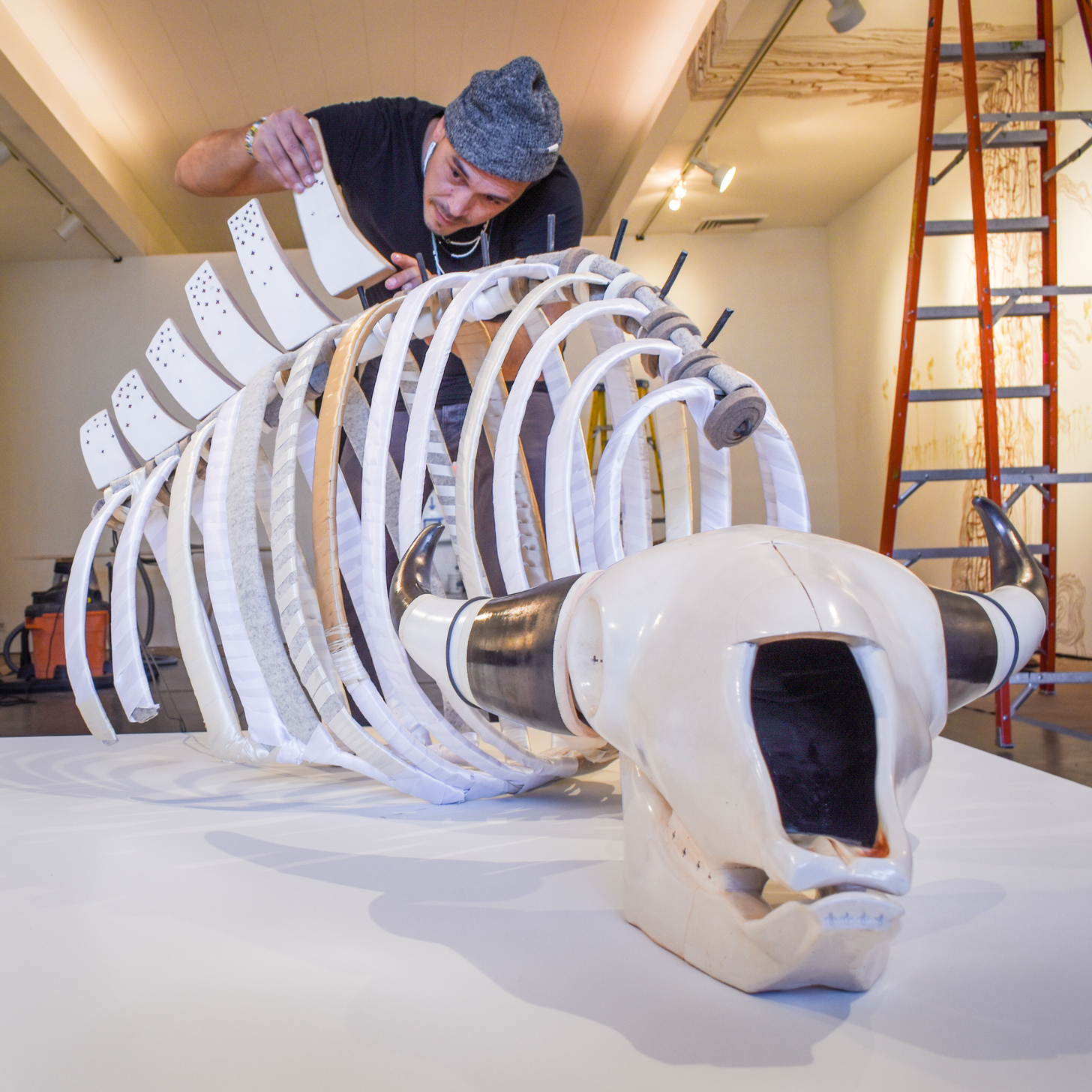Species in Peril Along the Rio Grande is an ambitious, multifaceted presentation that incorporates arts, science and activism through exhibits, performances and forums all focused on the devastating impact of the climate crisis on our regional ecology. It is, in large part, a response from contemporary artists to what they see as the species loss tied to the onset and continuation of the Anthropocene. It is a project that begins with an opening on Saturday, Sept. 28 at 516 ARTS and continues on through the end of the year with multiple events and exhibits. Check Weekly Alibi for times and locations.Cannupa Hanska Luger is one of the many artists participating. He is a New Mexico artist who works in sculpture and reclamation. His work reclaims part of the past in hopes of informing our present. His piece Be(Longing) on display at 516 ARTS speaks to the horrific decimation of the buffalo as part of our American history of Western expansion and the genocide of the native population. Weekly Alibi spoke with Luger while he was installing Be(Longing) at 516 ARTS to talk about where his work fits in to the larger scope of this exhibit and beyond. The following is an edited version of that conversation.Weekly Alibi: This show has such a large purpose. How does your work here differ pieces like the one you did at Standing Rock? Cannupa Hanska Luger: I don’t know what the difference is, honestly. I don’t know where this ends and the problems up there begin. The reason why I did this Buffalo is to really talk about deep time relationships of place. If we’re going to talk about environment, we’re going to talk about sustainability on the landscape. I thought it was important that we represented an apex entity that was a part of our landscape that was wiped out. We’re seeing the trophic cascade from that removal and we don’t recognize that. Like rivers changing their course had anything to do with Buffalo not being on the landscape. I don’t consider myself an activist. I consider myself just one of the living things on the planet and I’m involved. I’m invested. I’m implicit. You’re not outside of what’s going on?Of anything. Everything that has ever happened is my fault because I’m alive today. I wish we could all see that, then we wouldn’t rely on the weight of artists to be a conduit for influencing people’s opinions, changing people’s minds or educating people on issues that we’re all embedded in. The reality is right now, and probably throughout time, [art] has been a really excellent conduit to share ideas with culture.Is art an effective tool for environmental activism?I think art is an effective tool, period. How it’s applied is dependent on the audience that’s ready to receive the environment in which it takes place. I think at some point in our history, and not that long ago, we decided art was a noun and it becomes a luxury item and it became removed from its primary function. Its primary function is communication. Its primary function is a verb. Does art address the apathy or the faculty side of solutions?Honestly, I think we are plagued by solutions. We celebrate individualism. We celebrate the lone person. We celebrate celebrity. We celebrate the savior. Now you’re limited to one person or one small group of people deciding what solutions are. The problem with that is a solution to get across the river is to throw a rock in it and then hop across that rock [and that] ends up changing the river downstream forever. Then that’s going to be a problem, not for us, but for our generations afterwards. We keep looking for these instant solutions and I think what we really need to do is take a moment that may last a lifetime to really contemplate where we are and how we exist. Is this piece a mirror?Of course. I think they’re all reflections. This skeleton is what remains of something that has a deep time relationship to place. Now this mirror, this in a dead form, reminds most of our community, most people in the Americas, that they don’t belong here, and [that] they wiped out the thing that does. In an effort to relate to place, they destroyed what was already here in order to get a foothold. So, this is a brutal mirror, but it’s soft and it’s digestible. It doesn’t smell like rot. It doesn’t smell like the effect of it. It’s like training wheels on this experience.You have shown this work outside in a stream bed. Do you prefer the museum setting or outside?I would say I prefer outside, but I don’t really have a whole lot of agency in that as far as where I access people. I’m working within a systemic problem rather than standing outside of it and pointing at it. Can I get in there and start pushing the weight around and does that shift it over time? I will never live in the beautiful place that I can imagine. I would be long dead before that, but we can die trying.
Species in Peril Along the Rio Grande
Exhibition Opening Saturday, Sept. 28, 6pm to 8pm516 ARTS516 Central Ave. SWFree










